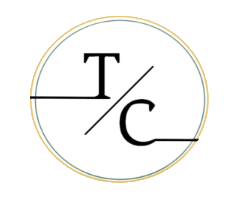Inventory Backflush
Inventory Backflush
Inventory Backflush is an accounting method that records the cost of the product after production. Once the product is finished, the costing system “backflushes” and deducts the material costs from inventory rather than tracking each component. It is also known as backflush costing.
For example, a car manufacturer produces 100 cars. Instead of recording the price of every nut, bolt, and piece, they backflush the inventory and record the costs once all 100 cars are produced.
This method, also known as backflushing accounting or backflushing costing, is widely used because it eliminates the need for constant, complex tracking during production.
Instead of logging every material usage and cost, businesses can allocate all costs once the product is finished or the service is provided.

The benefit is that inventory backflush is fast and efficient and reduces administrative work, which is perfect for businesses that don’t need detailed tracking at every step. However, companies that require precise cost monitoring during production may find traditional costing methods more suitable.
FAQs
What is backflushing a stock?
Backflushing a stock refers to the automatic deduction of raw materials or components from inventory at the end of the production process. Instead of tracking material usage, backflushing records inventory consumption only when a product is completed, simplifying the accounting process.
What is the process of backflush in accounting?
The backflush accounting process works as follows:
- Production is completed – A finished product is recorded in the system.
- Materials are deducted automatically. The system back-calculates the amount of raw material used based on the bill of materials (BOM).
- Costs are allocated—At the time of completion, the cost of the raw materials is assigned to the finished product.
- Inventory is adjusted – The system updates stock levels by deducting the used components.
What is the purpose of backflushing?
The main purpose of backflushing is to simplify inventory and cost management by avoiding real-time tracking of material usage. This makes it especially useful for high-volume manufacturing where manual tracking would be too time-consuming. Backflushing:
- Reduces administrative work
- Speeds up cost allocation
- Ensures inventory accuracy without constant monitoring
- Improves efficiency for standardized production processes
What is the difference between backwash and backflush?
The terms sound similar, but they refer to different processes:
- Backflushing is an accounting and inventory management method to record material usage after production.
- Backwashing is a mechanical process used in industries like water filtration, where fluid is reversed through a system to clean it.
What two types of backflushing are there?
There are generally two approaches to backflushing:
- Standard Backflushing – The system deducts materials based on a fixed bill of materials (BOM) once production is completed.
- Dynamic Backflushing – The system adjusts material usage based on actual production data, making it more flexible.
Is backflushing necessary?
Backflushing isn’t required for every business, but it’s highly beneficial for:
- Manufacturers with repetitive, high-volume production
- Businesses looking to streamline inventory tracking
- Companies that don’t require detailed cost tracking during production
What is the use of backflush?
Backflushing is used to automate material deductions and cost allocations in inventory management. It:
- Reduces manual work in tracking material consumption
- Speeds up financial reporting
- Helps businesses maintain accurate stock records with less effort
What is the difference between backflush and issue?
- Backflush deducts materials after production is completed, based on the BOM.
- Issue refers to manually recording each material usage as it happens, which is a more detailed but labor-intensive method.
What are backflush costing entries?
Backflush costing entries are the journal entries made in accounting when backflushing occurs. These typically include:
- Debiting the cost of goods sold (COGS) to reflect material usage
- Crediting raw material inventory to reduce stock levels
- Debiting work-in-progress (WIP) or finished goods inventory for completed production

